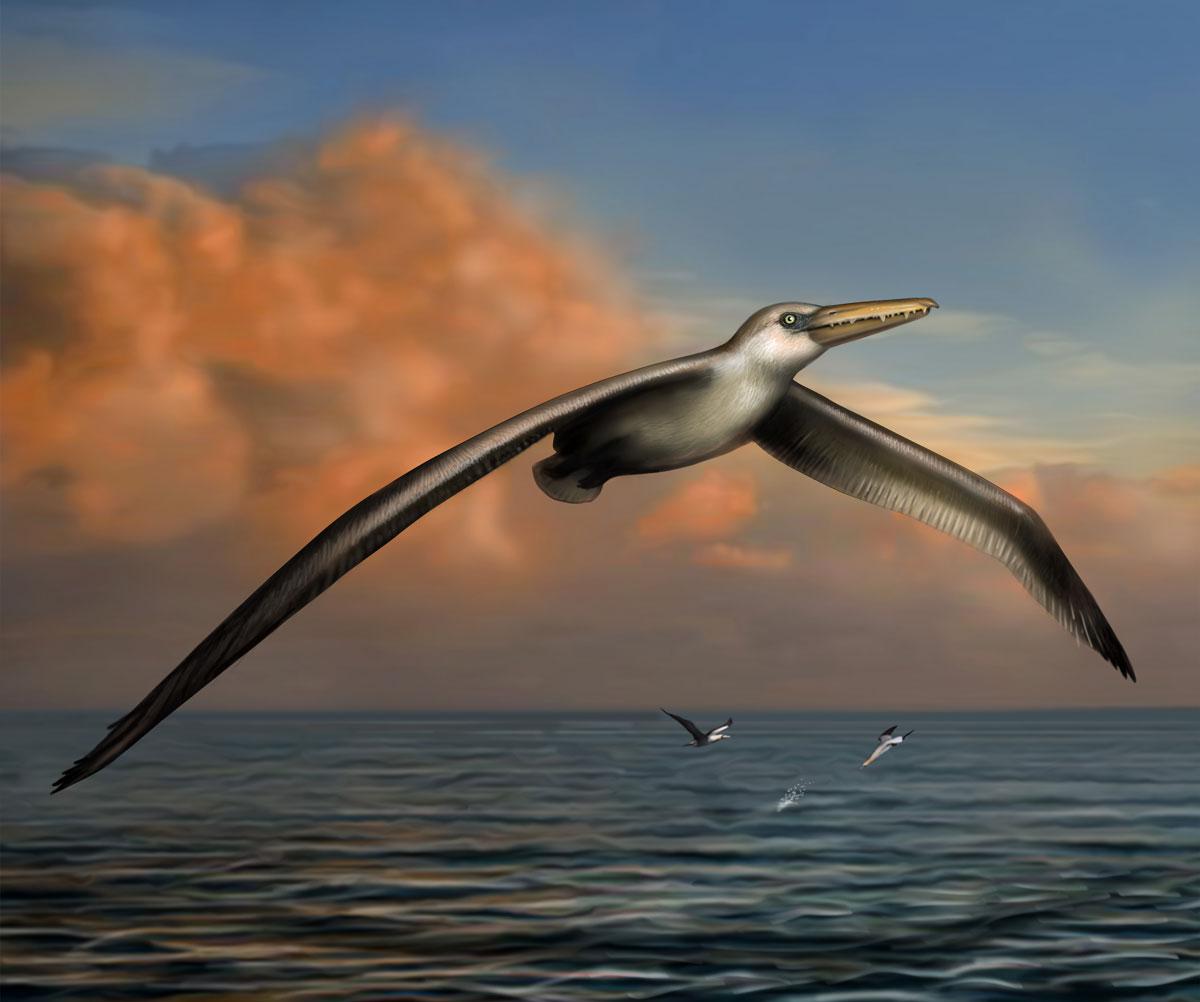If we had lived 3 million years ago, our holiday beach visits would not have been so pleasant. North American ocean fronts were home to Pelagornis sandersi, the largest known marine bird. It had a wingspan of up to 24 feet. For comparison, imagine the length of four humans head-to-toe, or the height of a two-story building. If its size isn’t terrifying enough, the bird also had pseudoteeth—all the better to impale its prey with.
The first P. sandersi fossil was found in 1983, when crews in South Carolina began construction to expand the Charleston International Airport. Charleston Museum volunteer James Malcom and museum curator Albert Sander removed a stone block containing the fossil and brought it to the museum for further inspection. (The sandersi in the species name is a homage to Sanders.) Nearly 30 years later, paleontologist Daniel Ksepka rediscovered it when he was invited to study the Charleston Museum’s fossils. “I was pretty confident it was a new species right away,” says Ksepka. “The size jumps out at you. I found a single wing bone longer than my arm, so I thought, this must be important.” Ksepka’s results are published today in the Proceedings of the National Academy of Sciences.
The newly described monster bird is part of a family of giant seabirds called Pelagornithids, named for teeth found on the edges of their bills. Unlike human teeth, which have roots and are covered with enamel, pelagornithids’ teeth were made of bone and were likely covered with beak tissue. Scientists believe these birds’ beaks resembled those of modern birds, only with bony, saw-like edges. “They were very sharp, but not made for slicing,” Ksepka says. “They could use them to catch fish or squids near the surface and impale them.”
The pelagornithid family was known for its ubiquity; species within the family have been discovered on every continent. According to Ksepka, it’s fairly rare for bird families to inhabit so many different climates. “Not that many birds make it to Antarctica,” he says.
Based on the structure of its bones, scientists are fairly certain that P. sandersi did fly. This raises one big mystery: How did something so large stay in the air? Bigger animals require more power to keep their bodies in flight. “It’s a scaling problem,” says Ksepka: Theoretically, extremely large birds cannot fly, because the amount of power they need to fly surpasses the power of their muscles. Some researchers calculate that this upper limit is around 17 feet, so by these estimates, a flying Pelagornis sandersi should be impossible. However, these calculations are based on the energy required for birds to stay in flight by flapping their wings; in new calculations, Ksepka proposes that large flying birds could have used other strategies. “They could harvest energy from the environment, like taking advantage of wind gusts,” he says. Like modern-day albatrosses, Pelagornis sandersi could have used their long wings to catch ocean winds and glide across the sky, rather than powering their flight with energy-intensive flapping.
This study is a first glimpse at an amazing ancient animal, but much is still unknown about how Pelagornis sandersi flew and hunted. “I’m looking forward to finding out how they launched and landed, and how maneuverable they were,” says Ksepka. Next time you’re at the beach, be thankful you have to shoo away only seagulls from your picnic snacks.
